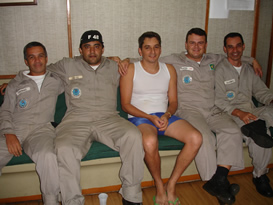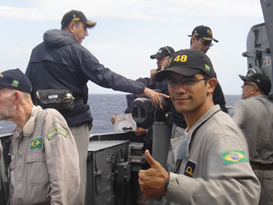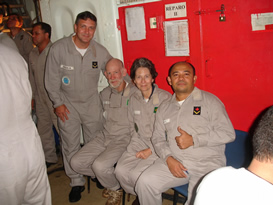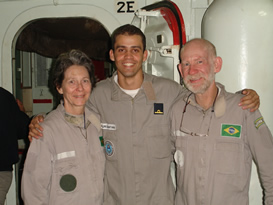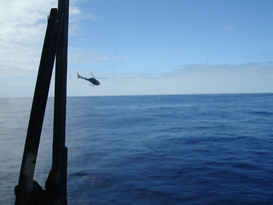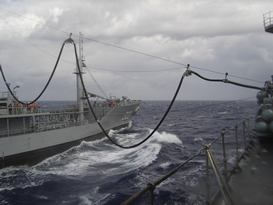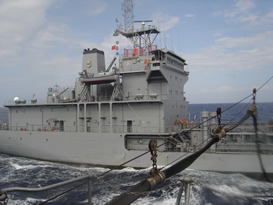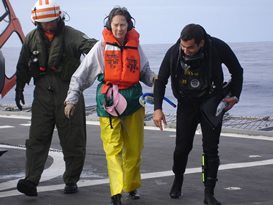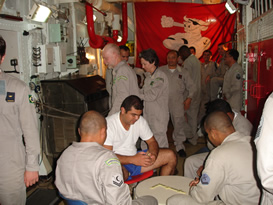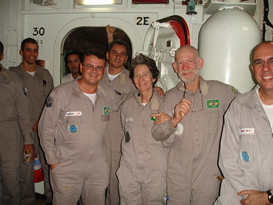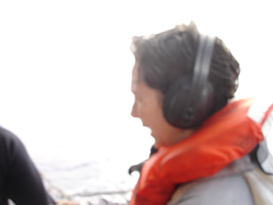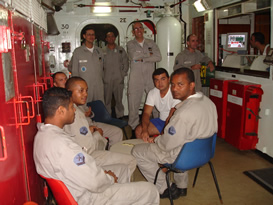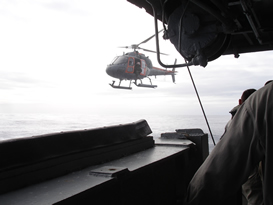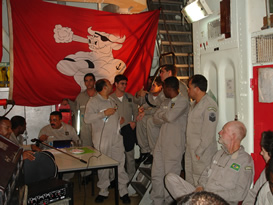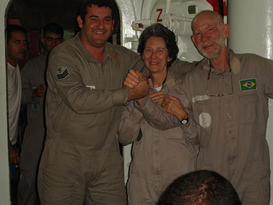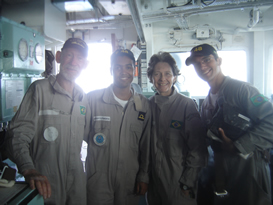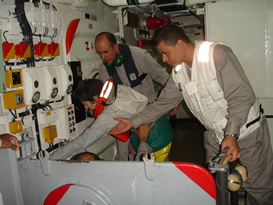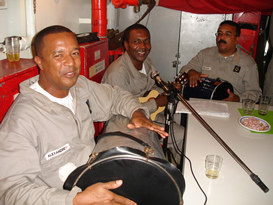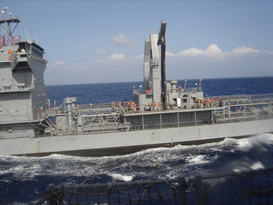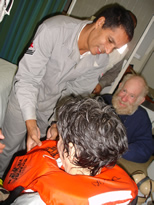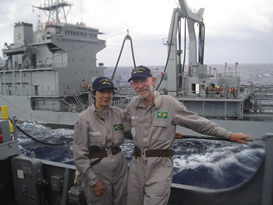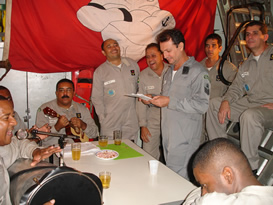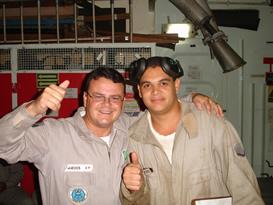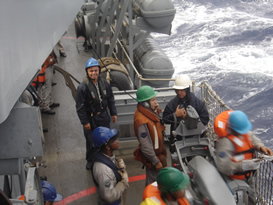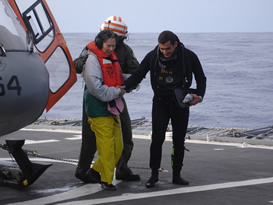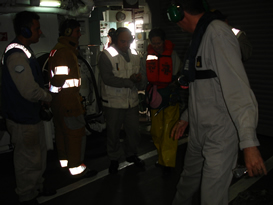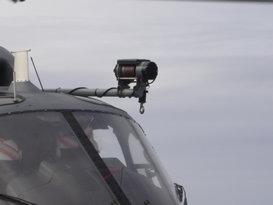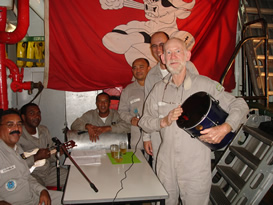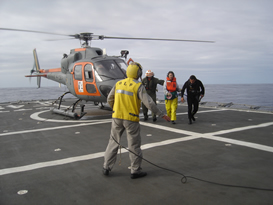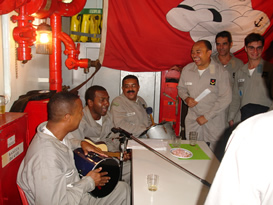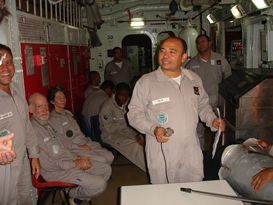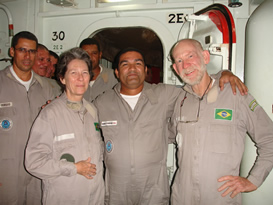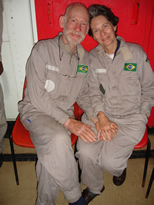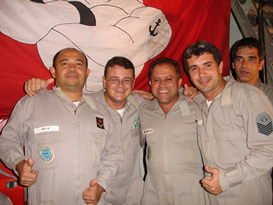Four years ago we moved aboard in Durban, to some that may seem a long time ago, but to us the time has flown and we have been truly blessed in moving to ever more inspiring places and are continually being confounded by the kindness of strangers. I’m sorry about the long delay in news but with us its feast or famine and although my sea-sickness has improved (?) I have not got so far as writing on passage. Even when we are stationery it takes some time to actually get down to writing.
As recounted in the last letter (Dec 2003) after Jess’ recovery in Walvis Bay (thanks to Gisela and Rowena + family) we were making ‘going noises. About a week or so before our 3 month stay expired, Jess was not feeling well and saw the doctor again. Received medication and a note for the immigration department suggesting an extension. An extension was granted, costing N$138 each, after which Jess travelled to Swakopmund to consult the specialist surgeon. Seems its some sort of bacteria which lives in the stomach, most of us have and live with it, but its a problem for others and requires treatment. This involved 2 antibiotics and a special antacid. To cushion the shock the doctor said he might only need a 7 day course but 14 days would definetly get rid of it. A half course cost N$ 1200! Makes a dent in the kitty. As we would be far from medical help we had to follow the full course. Jess took the last tablet the day before we left Walvis Bay - how’s that for timing?
A few days after we had obtained the immigration extension we chatted to an Amateur Radio friend Raymond , who talked about cruising Brasil and Angola. I’m not sure who to blame Angola on - Costa (ZS1XP) who 1st talked about Angola in May 23003 during our stop-over in Saldanha, or Raymond. The next day a local sailor rowed past and he too chatted about Angola. So with a germ of an idea beginning to grow, I took out the chart catologue with a view to investigating relevant charts of the coast to the north of us. By the end of the week Arie (who keeps an eye on the moorings) came past with a CD of ‘C MAPS’ and an old West African Pilot! Although we did not realize it then, it was all there was to be had regarding Angola and all we would need.
We went to the local library and the CNA book shop, both had nothing on Angola. We discovered that Vigguland (the arts & crafts shop mentioned in earlier letter) are the chart agents; they had no Angolan charts in stock but could order them at a cost of N$ 700! Fortunately when we got C Maps up and working (via instructions over the radio) we discovered how marvellous this system is. It took a bit of adjusting to at first; going from a small representation of a large area, zooming in to show ever greater detail. Afraid that the computer might fail or that we might not have the power to run it, I was unwilling to place all our eggs in one basket and so after reading the Pilot and asertaining the most likely places to stop (with radio input again from those instigators Costa and Raymond) we traced several detailed map off the screen. Some of the places took a bit of finding, eg. the port of Namib was referred to in the Pilot as Mossamedes (1965), other places had also changed names over the years. Fortunately the shape of the coast (capes, bays, shoals etc) don’t change. Must just mention that the tracing was sometimes complicated by the computer mouse moving independently on the screen due to the boat shuddering while running the engine to provide power for the computer. And you thought it was so easy living on a yacht! Al least the windy conditions in Walvis Bay helped keep the power up and even using C Maps we still had to tie the wind-generator off at times.
Its a long trip along the coast of Angola and we were anxious about the availability of fresh water. No problem - Costa who had ben planning for months to sail to Luanda, Angola, from Saldanana, said he would take extra water for us and that as sailors we should be able to obtain a visa on arrival. It was by then (now early Dec. and we had to leave by 15) too late to obtain a visa through regular channels - we woke up a bit late, not realising we would need them.We were working out and entering routes and waypoints into the GPS and J was painting an Angolan flag.
We had gone from hoping to meet Tom (ZS1TA) who was sailing in the Southpole II Race (Cape Town to St. Helena), to hoping to meet Raymond and Costa in Angola - c’est la vie!
The rest of our stay in Walvis Bay was tken up with preparations. While in Swakopmund J found the Fruit & Vege City and came back loaded with fresh stuff.
The Immigration building is further from the shops we usually visited, giving us the opportunity to pop into the Mission to Seafaers for a rst and lunch. Being close to the harbour entrance we tok the opportunity of going onboard a visiting yacht ‘Adventure’ (67ft BT Challenge boat). Run by the British military forces as part of their team building programme. Differednt crews of 14, would join for individual passage legs, the next was to Brasil. I eyed the shelf of Pilot books, navigation computer and satellite communications with envy.
A few days earlier, we had noticed a very big ship with pipes over her side in the harbour, now during our visit we got a closer look at the hired dredger. ‘Adventure’s’ skipper warned of the noxious sulphur smell when the dredger was working. Apparently some of the bridge crew had collapsed due to the fumes. We could certainly smell sulphur when we walked back through town. The Pilot warns of sulphur banks which dis/appear at times and it seems the reason for the unusual turquoise sea that we had seen around the moorings on several occassions. It also brings what looked to us novice like a red tide. It causes masses of tiny, pink crustations (remember the pink flamingoes food) these tiny 1-2cm worm like shrimp-tadpoles wash up along the lagoon shore and hundreds of thebirds (plovers, gulls, terns etc) enjoy a wonderful feast. We wondered if it effected the mussels but Arie assured us not, so come the next Spring tide J was collecting mussels again. The only problem was finding some after we had foolishly alerted a cruising French catamaran crew to their edibility.
We also saw greebs, I thought they were ducklings but Raymond identified them from my ‘0n air’ description. Shy birds they kept away from us, they are easy to spot, usually in large groups of fifty or more, by the accompanying gulls. The greebs swim very fast and the gulls have to take off and fly ahead to keep up with them, which they do in the hope of bullying fish from the greebs as they surface. There are also hundreds of terns flying and hovering overhead; their wings appear very long for such tiny birds and the sun shines through the wing edges making them appear transparent.
We were visited by a pod of about 10 very large bottle-nose dolphins one morning. One was so large that had it not been so close we might have thought it was a baby whale. These were the last we saw, apart from those that J saw illuminated by phosphorescence shortly before we crossed the Cunene River border.
Towards the end of November the weather warmed up, becoming 19C at night, although the foghorn could still be heard. It even rained 1-2mm, great excitement. Did not however wash the sand off the decks, think of it only truly left us half way across the Atlantic.
Jess sank the dingy one day; he had gone ashore to rinse out the laundry and get fresh water. He would fill the water containers at the slipway in the lagoon. On the return tripas he left the shelter of the lagoon entrance, the in-coming tide together with a freshening onshore breeze, caused small breaking waves. He was looking behind and not paying attention, too late, a sneaky wave broke over the bow, filled and sank the dingy. Luckily it was no more than chest-deep, so after rescuing the mostly floating contents, it was easy to empty. Fortunately he had stopped the outboard in time and after rinsing and servicing it started – relief.
The yacht club was a hive of activity during the week before we left in December. They hold an annual regatta for Lasers, Fireballs & Hobie 14 & 16. Nice for us because with all the extra people, the gas in the ‘ladies’ was fixed and I could stop showering in the ‘gents’. The docks also came alive with the arrival of a cruise ship, which resulted in 4 tour buses and about 20 safari vehicles to show the visitors the sights.
Rowena kindly allowed us the use of her washing machine so we would have a clean departure and there were the last bits of shopping to do. Including a 2004 Diary. Had hoped to have a Brazilian diary but am learning to buy when available. Found a fish shop (near Mission) which had fresh skate wings (very cheap, lovely delicate flavour) and smoked angel fish and chicken (which keeps well without refridgeration). Then I discovered that the Credit Card was at its limit ( all those medical expenses etc). So by the time Arie took is to clear out with the Port Authorities and we had filled up with diesel and gas, bought stamps for a few Christmas cards (Mother Hawes we hope you received yours) went to the Internet to send Christmas greetings, we had spent the last of our Namibian money. We left Walvis Bay on 20 Dec 2003, after using up all the remaining airtime on the mobile phone sending SMS’s and trying to phone Gisela for your birthday (think you must have been at the Christmas Market at Swakopmund).
Finally we were off. Heather & Jess on ‘Dalkiri’

